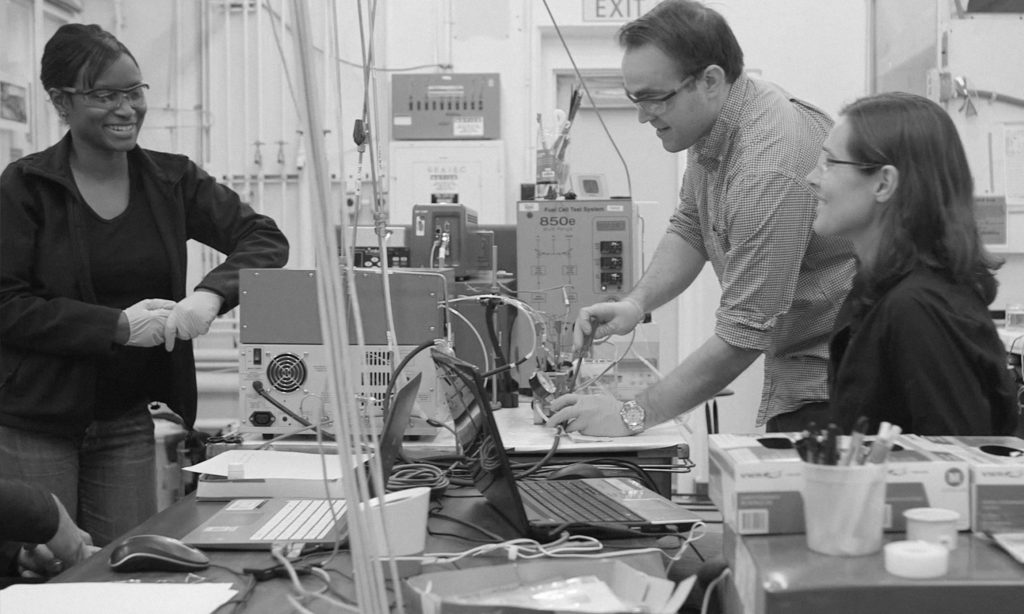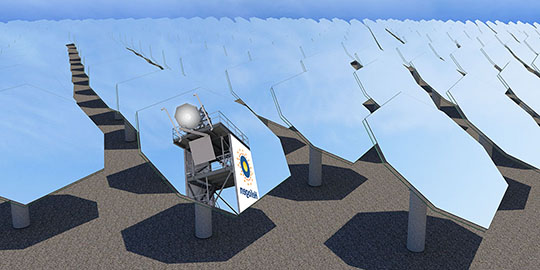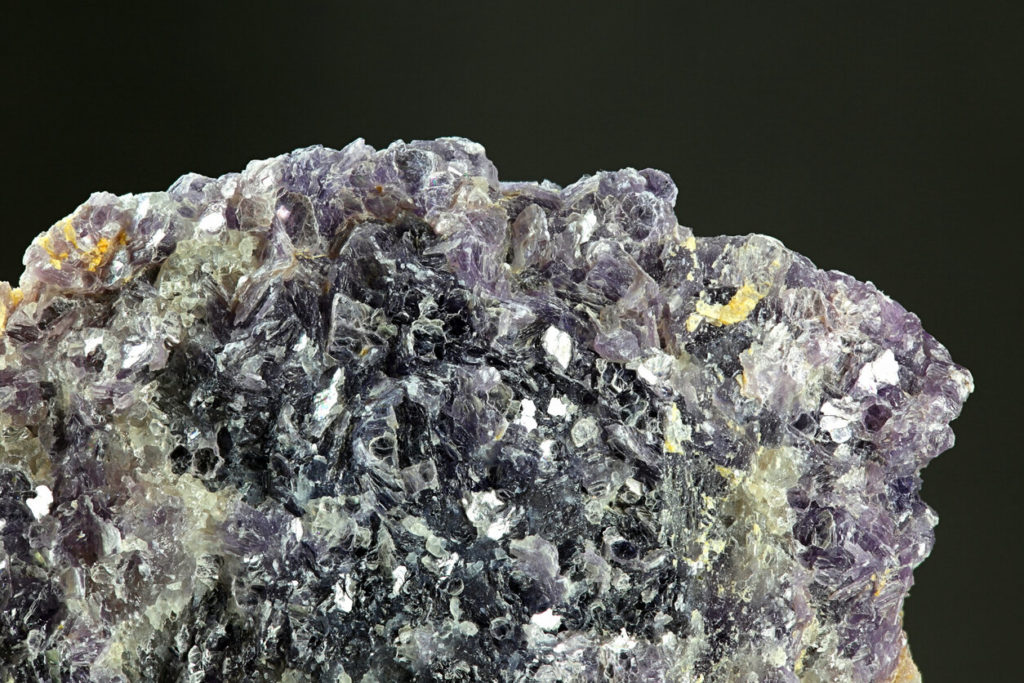
There is no doubt in my mind that the human species can figure out a way to slow, or perhaps even stop, the Earth’s rapid descent into an uninhabitable, hot mess of a wasteland. Humans were the clever clogs who set us all on this path to destruction – and for more than 100 years we’ve been happily riding along it. So now, with ever-stronger desires to pull the vehicle to a screeching halt, we are seeing some truly innovative solutions to correct the wrongs of the past. It can’t be denied that as a human species we are smarter than we were 100 years ago. The problem is, we’re also collectively more selfish (see: lack of adherence to COVID-19 safety directives) and greedy (see: common ideology that he who dies with the most stuff wins) and corrupt (see: politics).
But what I’ve found is that there really are some incredibly intelligent beings among us, who are doing great things! Here’s a little intro to some of their clever tech, which really might be the savior of human life on a habitable Earth.

“What if we reframed CO₂ as a feedstock, rather than a waste product?” This is quite an impactful question from Opus12’s website. So they’ve been working to not only capture carbon emissions, but harness them to create a positive output. The work is incredible! Their tech bolts on to any CO₂ emissions source, adds water and electricity, and transforms that harmful CO₂ into essential chemicals we all need like renewable natural gas or ethylene for plastics. The team is made up of engineers, materials scientists and electrochemists, and they have been making a huge impact – already having secured about $20 million in funding and recently announcing a collaboration with PG&E and SoCalGas. Their latest breakthrough: separating the carbon dioxide from biogas production and, with the addition of renewable electricity, producing pipeline quality renewable gas. The possible power for this technology is profound – making carbon dioxide profitable and reducing the emissions of the world’s biggest emitters. The carbon in our atmosphere isn’t diminishing any time soon, nor can we see in the near future that carbon emission reductions will be truly enforced or legislated. So, this tech is very exciting!

On the surface, this looks like a solar power company. They use sunlight to replace fossil fuels. But not in the traditional way you think of solar power. This isn’t a solar panel to heat your water… this is using the sun’s energy to actually create exorbitant heat and fuels. They are “transforming sunlight into fuels like hydrogen and syngas.” Wow! The sun’s energy is collected and concentrated on Heliostats (computer controlled mirrors) and is converted to ultra high temperature heat, up to 1500ºC, called HelioHeat™️. This can then be used in industrial processes like steel or cement manufacturing to completely replace the need for fossil fuels and thereby dramatically reduce carbon emissions. Or, the Heliogen tech can be used to thermo-chemically split water into hydrogen, which is currently being developed into HelioFuel™️ to power transport or heat homes. This technology would seem to answer the problem of renewable energy not being powerful enough to meet industrial requirements or even large scale urban living needs, so it’s creating the kind of excitement and enthusiasm you’d expect, including direct investment from Bill Gates.

This is a very new startup – so much so, they’ve yet to finish building their website. But their location on the internet is quite irrelevant. What they’ve spent time building is a quasi- battery. It’s rechargeable like a battery. But while it’s charging, it … wait for it … collects CO₂ out of the air! Then when you discharge it, it propels a stream of pure CO₂, which could be directed into the ground for storage; drinks to carbonate them; or to produce refrigeration systems. Carbon has uses – currently we produce carbon intentionally for said uses – and that means that it has monetary value. This is a similar take on carbon as the above mentioned Opus12, an extension of simply removing the harmfulness of it from our atmosphere. While carbon capture systems aren’t all that new any more, this system, called electro-swing adsorption, offers 3 benefits over the others: it can collect carbon from very low concentrations in the air which other carbon capture systems cannot; it is much less expensive to build and operate; and it is able to make the carbon available to use. There is some controversy over this tech – that it works to undermine the overall environmental and climate science stance that carbon emissions should simply be stopped – but as we’re yet to see robust policies on said stoppage, and even when such policies came into play it would take a further decade or two to implement, in my humble opinion, this is an excellent stop gap for those next few decades. I’m not the only one who thinks so – Verdox has successfully been welcomed into the portfolio of Prime Impact Fund.

This startup has been around a little while, but the tech they’re working on is extremely slow to commercialize as it’s a very challenging area – nuclear energy. There are few more polarizing topics in the climate change/energy debate (among people who aren’t deniers) than the exploration and development of nuclear energy. It’s not hard to see why, of course, with extremely dangerous risks like meltdowns and waste disposal. But Oklo have produced a reactor that isn’t susceptible to meltdowns at all, is simple to cool, produces zero emissions, is small and portable (500 times smaller than conventional reactors) and it can consume nuclear waste. Therefore, taking all that into account, it’s also much cheaper to set up. It’s a Gen IV modular nuclear reactor and has the potential to bring improved safety, sustainability, cost and efficiency to the energy market. They were a successful graduate of Y Combinator in 2014 and have recently been announced as a portfolio company for Trust Ventures. They are planning to have a commercial reactor online before 2025 – Oklo is one to watch in this space, so you can keep updated with their progress here and here.

Lithium is a precious and hard earned commodity. And it’s one with a vital place in our renewably energized future. Current growth of the EV market would need lithium production to grow at a rate 30 times faster than where we’re at right now, and that’s not including the need for lithium batteries for all other applications – and it is an irreplaceable element for these jobs. It’s no secret that lithium extraction is costly, time consuming, inefficient, produces plenty of GHGs and has a terrible impact on local water resources. But Lilac Solutions have come up with a, well, solution. They are able to extract lithium from brine without the need for the current expansive evaporation ponds. In addition, it uses far less water, produces 80% less GHGs, and offers 70-98% efficiency (compared with traditional lithium brine extraction recovering only 40% of what’s available). They use a patented ion exchange process. This process is used in water treatment and mining, so the transference of this tech to lithium extraction should have been simple and was certainly scientifically sound. But until Lilac Solutions came along, no-one had been able to produce a material to use which would absorb the lithium while withstanding the acid bath (required for the ultimately extracting the element). They have recently secured a Series A funding round of $20 Million – so the faith in this technology is huge, and obviously I’m excited to see this huge step forward for renewable energy.
We are lucky to have some incredibly bright, persistent, and bold humans among us. There are plenty of reasons to be feeling hopeful for the future of clean energy so that we may (as quickly as possible, please!) ditch fossil fuels. Of course, none of this means we stop acting as environmental stewards and sustainability warriors ourselves, doing everything in our own power every day, but we can sleep better in the knowledge that there are people out there who are making important advances in the right direction.



